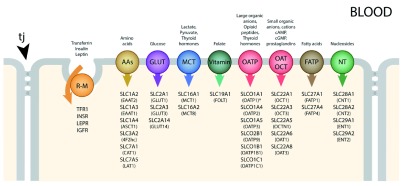Figure 4. Summary of inward transporter mechanisms in cerebral endothelial cells.
Individual transporters shown are ones identified in human material 29. Tight junctions (tj) between adjacent cells prevent the paracellular passage of hydrophilic compounds. R-M = receptor-mediated, GLUT = glucose transporters, NTs = nucleoside transporters, AAs = amino acid transporters (includes LAT), OATP = organic anion transporting polypeptides, OAT = organic anion transporters, OCT = organic cation transporters, MCT = monocarboxylate transporters, FATP = fatty acid transport protein. Many of these transporters are solute linked carriers (SLCs). Both SLC designations and the original abbreviations are included here. SLC1A2/EAAT2, SLC1A3/EAAT1 high-affinity glutamate, SLC1A4/ASCT1 glutamate/neutral amino acids, SLC2A1/GLUT1, SLC2A3,14/GLUT3 glucose, SLC3A2/4F2hc amino acid transporter heavy chain, SLC6A12/BGT1 neurotransmitter, SLC7A1/CAT1 cationic amino acid, y+ system, SLC7A5/LAT1 amino acid light chain, L system, SLC10A1/NTCP sodium/bile acid cotransporter. SLC16A1/MCT1, SLC16A2/MCT8 monocarboxylates, SLC19A1/RFC folate, SLC22A1/OCT1 organic cations, SLC22A3/OCTN3 organic cations, SLC22A5/OCTN2 organic cation/carnitine, SLC27A1/FATP1 fatty acid, SLC29A1/ENT1 equilibrative nucleosides, SLCO2B1/OATP2B1 organic anions, SLCO1B1/OATP1B1 organic anions. Examples of receptor-mediated transporters are insulin receptor (INSR), transferrin receptor (TFR1), leptin receptor (LEPR), low-density lipoprotein receptor (LDLR), and insulin-like growth factor receptor (IGFR).

